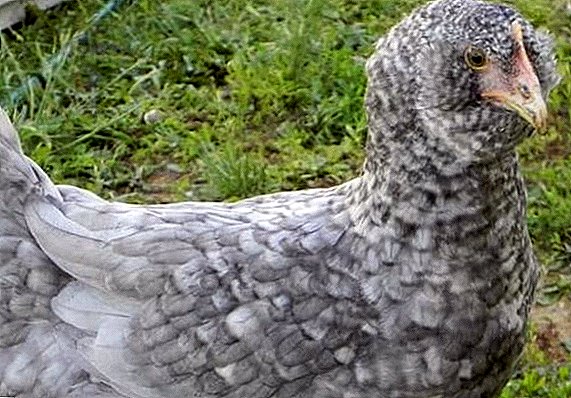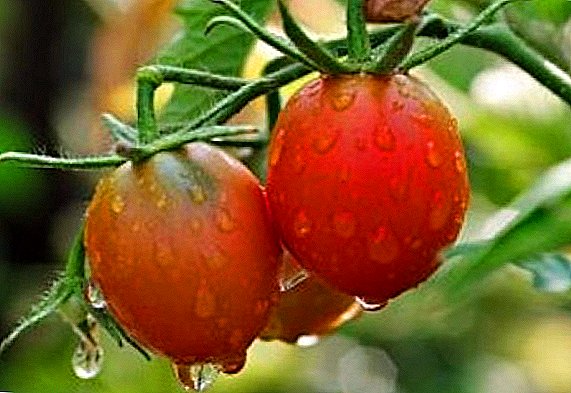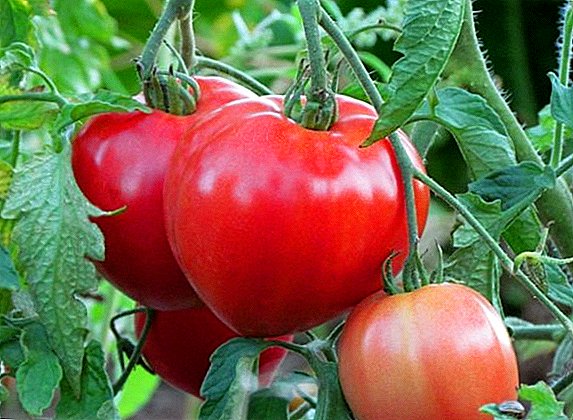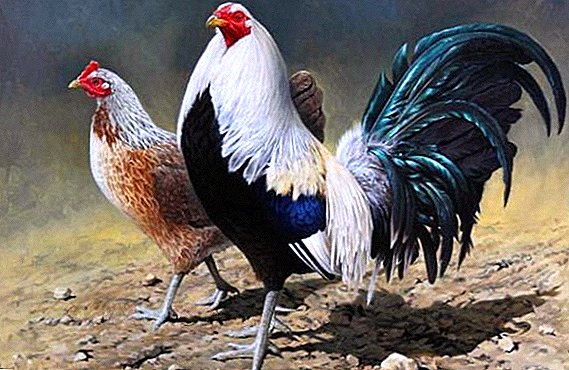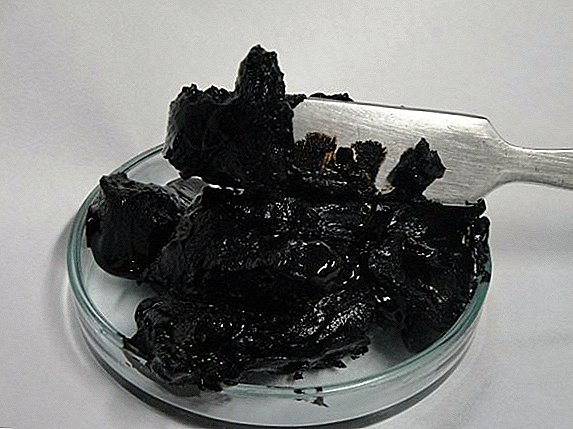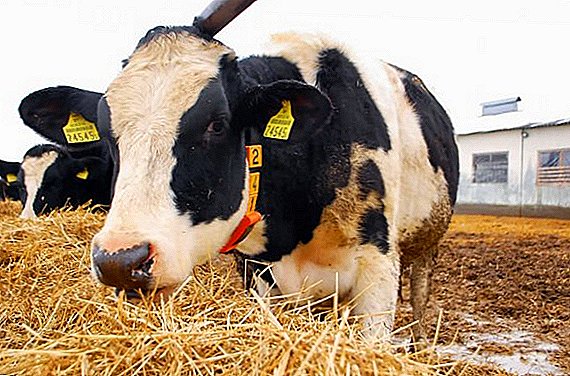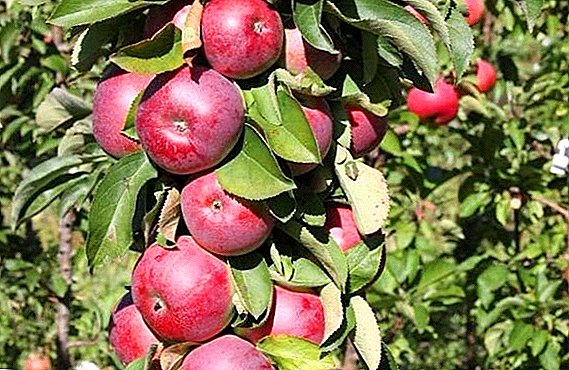 Apples - favorite fruit for many people, which is not surprising, given their massive distribution in our country. Summer residents and professional gardeners often look for more and more new varieties of trees for planting on their plots, and the main selection criteria include not only the high taste qualities of the fruit, but also the external characteristics of the apple tree itself. We suggest you to get acquainted with one of the interesting varieties called "Triumph".
Apples - favorite fruit for many people, which is not surprising, given their massive distribution in our country. Summer residents and professional gardeners often look for more and more new varieties of trees for planting on their plots, and the main selection criteria include not only the high taste qualities of the fruit, but also the external characteristics of the apple tree itself. We suggest you to get acquainted with one of the interesting varieties called "Triumph".
History of breeding varieties
The apple variety "Triumph" is the result of the breeding work of the VTISP staff and was included in the state register in 2015 as a plant with the fruits of an average ripening period. The authors of the variety, who conducted the work on its selection, are considered to be V. Kichin and N. G. Morozov. 
Did you know? Despite the fact that many varieties of columnar apple trees today are intentionally bred, the first trees with such external characteristics appeared quite by accident. This happened in 1964 in Canada, when in the province of British Columbia, the 50-year-old MacIntosh apple tree gave an unusually large branch without the usual lateral branches, but with a large number of fruits.
Tree description
Trees varieties "Triumph" differ quite modest size, growing in height to two meters (but even so, many consider them not "dwarfs", but "semi-dwarfs"). This columnar apple has a medium growth rate and a medium-thick crown, resembling a narrow pyramid.
Learn how to grow a columnar apple in your garden, as well as on varieties of columnar apple trees like "Currency", "President", "Vasyugan".The shoots located on the trunk are medium-thick, rounded and upright growing with a bare surface of olive color.
 Dark green leaf plates - rather mediocre, slightly elongated, pointed at the end. The leaves are smooth to the touch, with slight concavity and a finely serrated, smooth edge.
Dark green leaf plates - rather mediocre, slightly elongated, pointed at the end. The leaves are smooth to the touch, with slight concavity and a finely serrated, smooth edge.Inexperienced gardeners can easily confuse "Triumph" with other varieties of dwarf apple trees, but upon closer inspection, the differences are obvious.
Learn more about varieties of dwarf apple trees, especially such as “Bratchud” and “Wonderful”.
Fruit Description
Under standard conditions, the fruits of a variety grow to medium or even large sizes, with a mass of each apple 100-150 g (there are instances weighing 200 g). Their shape resembles a slightly oblate ball, but the fruits remain unidimensional.
The peel of apples is glossy and fairly dense, with an attractive bright dark red blush on the entire surface.  Inside the apples are hidden juicy and snow-white flesh, with a fine-grained structure and a pronounced apple flavor. The taste of the fruit is honey-sweet, but with the presence of light sourness, which only favorably complements it.
Inside the apples are hidden juicy and snow-white flesh, with a fine-grained structure and a pronounced apple flavor. The taste of the fruit is honey-sweet, but with the presence of light sourness, which only favorably complements it.
Characteristics of a variety
The first thing gardeners pay attention to when choosing an apple tree is the characteristic of the variety and its requirements for care.
Also important will be information on yields, fruit harvesting period, resistance to disease, frost and some other important aspects, which will be discussed further.
Disease and pest resistance
The main trump card varieties "Triumph" - high resistance to scab pathogens.
Check out the rules for dealing with scab on apple trees.This disease often affects apple trees en masse, causing significant yield losses, but in this case resistance to it is laid in the variety at the genetic level.
 Of course, under certain conditions, apple trees can get sick with other common illnesses, but this happens infrequently, because the resistance of the variety to diseases is very, very high.
Of course, under certain conditions, apple trees can get sick with other common illnesses, but this happens infrequently, because the resistance of the variety to diseases is very, very high.Drought resistance and winter hardiness
It cannot be said that Triumph will be the best option for a columnar apple for regions with severe winters. Despite the fact that its frost resistance is at a sufficiently high level, at very low temperatures trees may simply not survive the cold season.
To frost resistant include such varieties of apple trees as "Imrus", "Cowberry", "Uralets", "Autumn striped", "Ligol", "Berkutovskoe".As for humidity, this is a very important indicator for obtaining a high-quality and abundant crop, therefore in particularly dry time it is advisable to water the trees every 2-3 days.
Gestation period
Harvesting apples of the "Triumph" variety is from the beginning to the middle of September, when the fruits have already reached technical maturity. 
Fruiting and Yield
Among the positive characteristics of the described variety, it is worth highlighting the high yield, and the trees begin to bear fruit fairly quickly.
Such varieties as the Beauty of Sverdlovsk, Sun, Zhigulevskoe, Dzhonagold, Orlik, Spartan are also distinguished by high yields.
So, starting from the second or third year after planting, you can already harvest your first crop on clonal dwarf and semi-dwarf rootstocks, but you will have to wait a few more years until the maximum fruiting: the total yield falls on the fourth or fifth year after planting.
On average, from one tree you can get about 6 kg of apples, but with good care this figure can grow up to 10 kg. Approximately 80-100 tons of fruits are usually harvested from 1 ha. 
Transportability and storage
The shelf life of the fruit of apple varieties "Triumph" is only 2-3 months, which is explained by the relatively low characteristics of the paper cake. In addition, these apples are unsuitable for long-term transportation, although they are often grown for commercial purposes.
Did you know? The most expensive apples in the world can be considered Sekai Ichi, bred by breeding in Japan. One such apple (it can easily reach a weight of 2 kg) costs more than $ 20, and the Japanese themselves consider them a delicacy and eat only on holidays.
Growing conditions
When planting a plant, it is necessary to choose areas that are well-lit by the sun and located in a place protected from sudden gusts of winds. Also important in successful fruiting is the level of groundwater occurrence: it is highly desirable that the roots of the plant are not flooded.
When planting seedlings, the soil should already be warm enough, since in a cold soil the tree simply does not take root. 
Optimum time and recommended landing pattern
Planting seedlings described varieties can be done at the end of April and in the fall. In any case, a month before this, it is necessary to properly prepare the seat and dig a hole 75x100 cm in size.
When extracting soil from it, the top (most fertile) layer should be mixed with any available organic material, which will improve its physical and mechanical properties and make the substrate more loose, nourishing and breathable. In the future, this will contribute to a good survival rate and development of the seedling.
Important! If there is a threat of possible flooding of the site with groundwater, it is recommended to organize a drainage at the bottom of the pit to remove excess moisture.
With the direct planting of the plant, the seat (i.e., the pit) is covered with layers of earth, using the soil mixture prepared earlier.  The most successful planting scheme of the Triumph variety is the preservation between the trees of 0.5 m and 1 m between adjacent rows.
The most successful planting scheme of the Triumph variety is the preservation between the trees of 0.5 m and 1 m between adjacent rows.
This placement will allow all saplings to get enough light, and the root system will have plenty of room for good development.
The lack of space due to the thickening of the plantings often leads to the incorrect formation of apples, the shape and color of which will almost certainly be different from the accepted norm.
Basics of seasonal care
Many gardeners after planting trees in the garden almost do not care for them, relying only on nature, but in the case of "Triumph" such a scenario would be wrong. To get a good harvest, all planted apple trees need to be watered, fertilized and cut in a timely manner. 
Soil care
One of the main points in the care of the "Triumph" is sufficient and regular watering, especially relevant to drought. On average, about 10 liters of water are poured per tree, poured under the barrel with regularity 2-3 times a week.
The trees begin to be watered at the stage of budding and continue this process until the autumn, of course, taking into account the weather conditions. The next day after watering, it is necessary to loosen the soil slightly in a circle around the trunk, removing weeds from it as needed.
Important! Considering the close location of the root system of the columnar apple trees to the surface of the earth, loosening is carried out very, very carefully, without going more than 10 cm.
In order to retain moisture in the soil, preventing its rapid evaporation, it is highly desirable to periodically mulch the tree trunk with straw that can remain in it until winter (during the cold season, the mulch is removed so as not to attract rodents). 
Top dressing
In the case of the "Triumph" variety, fertilizing with microelements proved itself to be well-proven by spraying the green mass of trees with a solution prepared according to the recommendations on the package (they are different for each nutrient composition).
Learn how and what to spray an apple tree in autumn and spring, how to protect an apple tree from pests.
Top-dressing with nitrogen and organic fertilizers should stop as early as August, but potassium can be applied until the autumn, after harvest.
The following mixture will be suitable for the role of organic composition for fertilizing trees: in a bucket of water, you need to dilute the spade of manure and a tablespoon of urea, carefully mixing these ingredients. The finished composition is poured under each plant in the calculation of 2 liters per apple tree. 
Cropping and crown formation
All columnar apple trees need pruning, and this process has its own characteristics. Thus, as a result of damage to the upper fruit point, the simultaneous development of two apical shoots can be observed, which violates the structure of the crown and leads to asymmetry of the tree.
Get acquainted with the features of pruning apple trees.Negative consequences can be avoided by removing the weaker escape. In addition, side shoots are also subject to removal, which are often also formed on representatives of the Triumph variety. Perform the procedure during spring pruning.

Preparing for the winter
Despite the relatively high winter hardiness of the trees described, when the temperature drops below -10 ° C, they can freeze, which means that in regions with very harsh winters, it is worth thinking about sheltering trees in the autumn time (this is especially true of young seedlings).
As a covering material, you can use straw or shavings, and if you want to further protect the apple tree from rodents, then you should stock up on pine spruce trees. In a pinch, you can use snow for hilling.
Important! It is very desirable that the material used for the shelter should be dry, because only in the absence of moisture will the pathogens not multiply under it.
Apple use
Triumph variety apples are excellent for fresh consumption and for thermal processing of jam, jam and jam. If you wish, you can add them to pies or other pastries, as well as prepare a variety of drinks on the basis of the fruit. 
The advantages and disadvantages of the variety
As you have already noticed, the Triumph apple variety has many positive properties, but it has not been without its drawbacks, which, of course, are relatively less.
The advantages of growing varieties include:
- the possibility of obtaining beautiful and fairly large fruits with high taste and dessert characteristics;
- compactness of the apple trees themselves (even a small area will easily fit several plants);
- high yields and precociousness of the trees (the first fruits can be expected already in 2-3 years after planting the seedlings);
- good indicators of disease resistance, in particular, in relation to such a common problem as scab.

The disadvantages of growing plants include:
- low indexes of storage (shelf life of only 2-3 months);
- impossibility of cultivation in the conditions of severe winters.
You will agree that there are a lot of advantages, and if we add to them the comparative simplicity of caring for plants, then the above disadvantages will be completely invisible. In a word, the Triumph variety definitely deserves your attention when choosing an apple tree for your plot.


